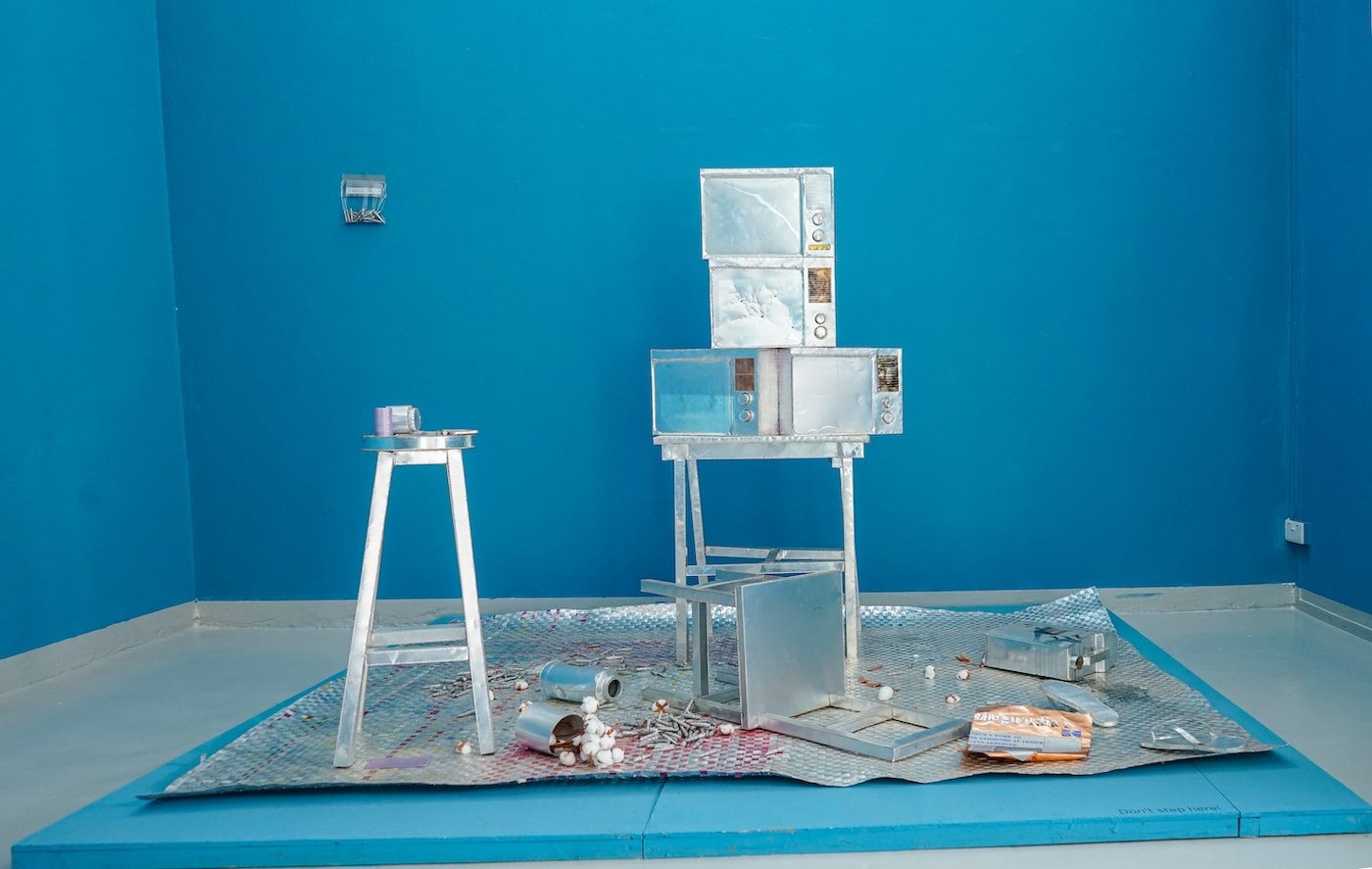Sanford Biggers: The Many Faces of Sanford Biggers
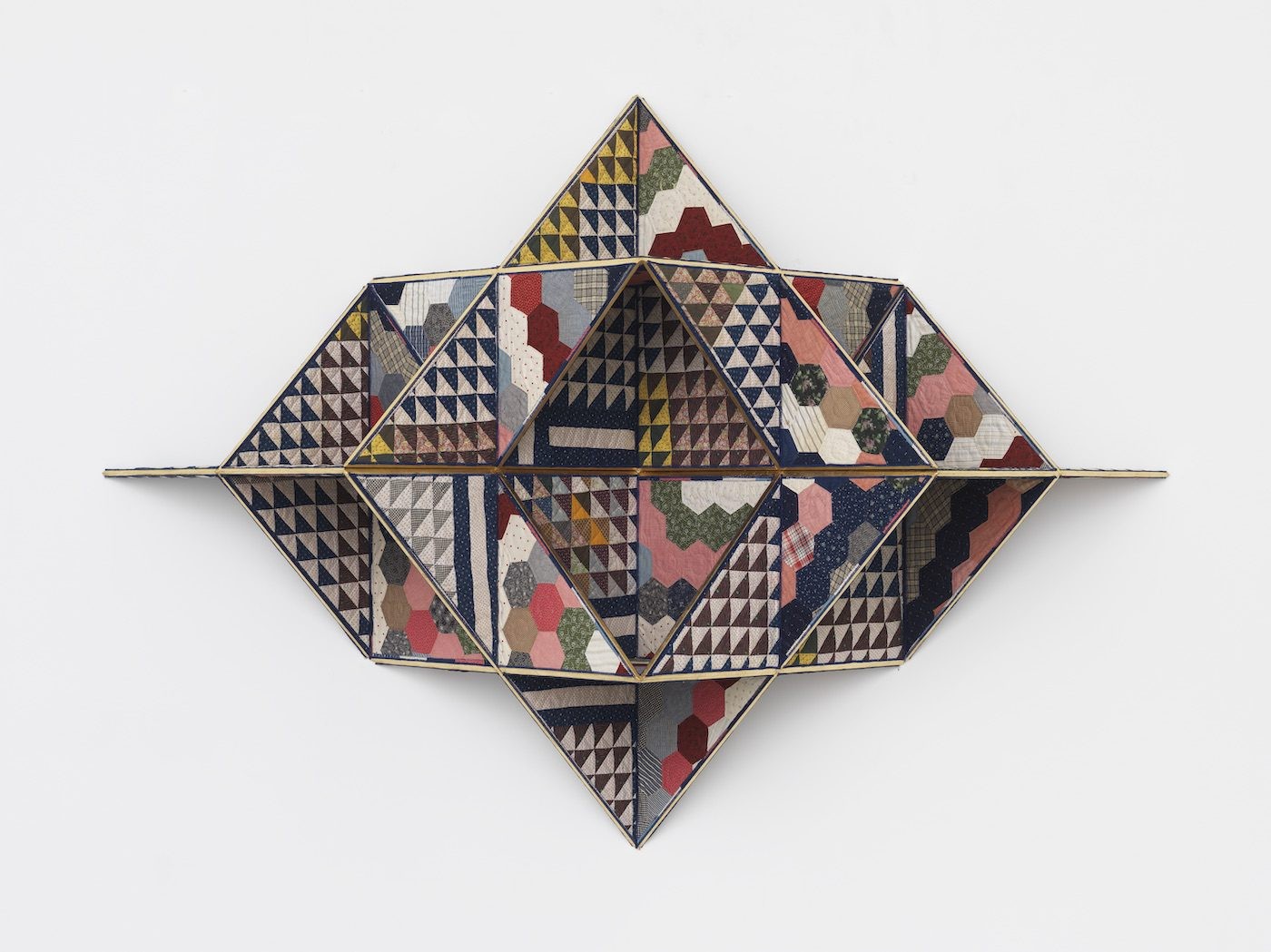
19 February 2020
Magazine C& Magazine
Words Nan Collymore
7 min read
Though cerebral and multilayered, Sanford Biggers work moves easily from medium to medium. Often times he is re-forming the material with bullets or paint—folding and repackaging a familiar material or figure into a different form with subjective gestures. With C& he spoke about his upcoming solo show “Codeswitch” and the many frameworks with which he works within.
Contemporary And: What are you currently working on?
Sanford Biggers: I’m working on my solo exhibition, Codeswitch, opening this April atThe Bronx Museum of the Arts. It’s a survey of the last several years, of a series entitled Codex which includes mixed media paintings and sculptures done directly on or made from pre-1900 antique quilts. I’m very excited about it. For me, it’s a way of looking back on all of those different pieces and what the evolution of that project has been.
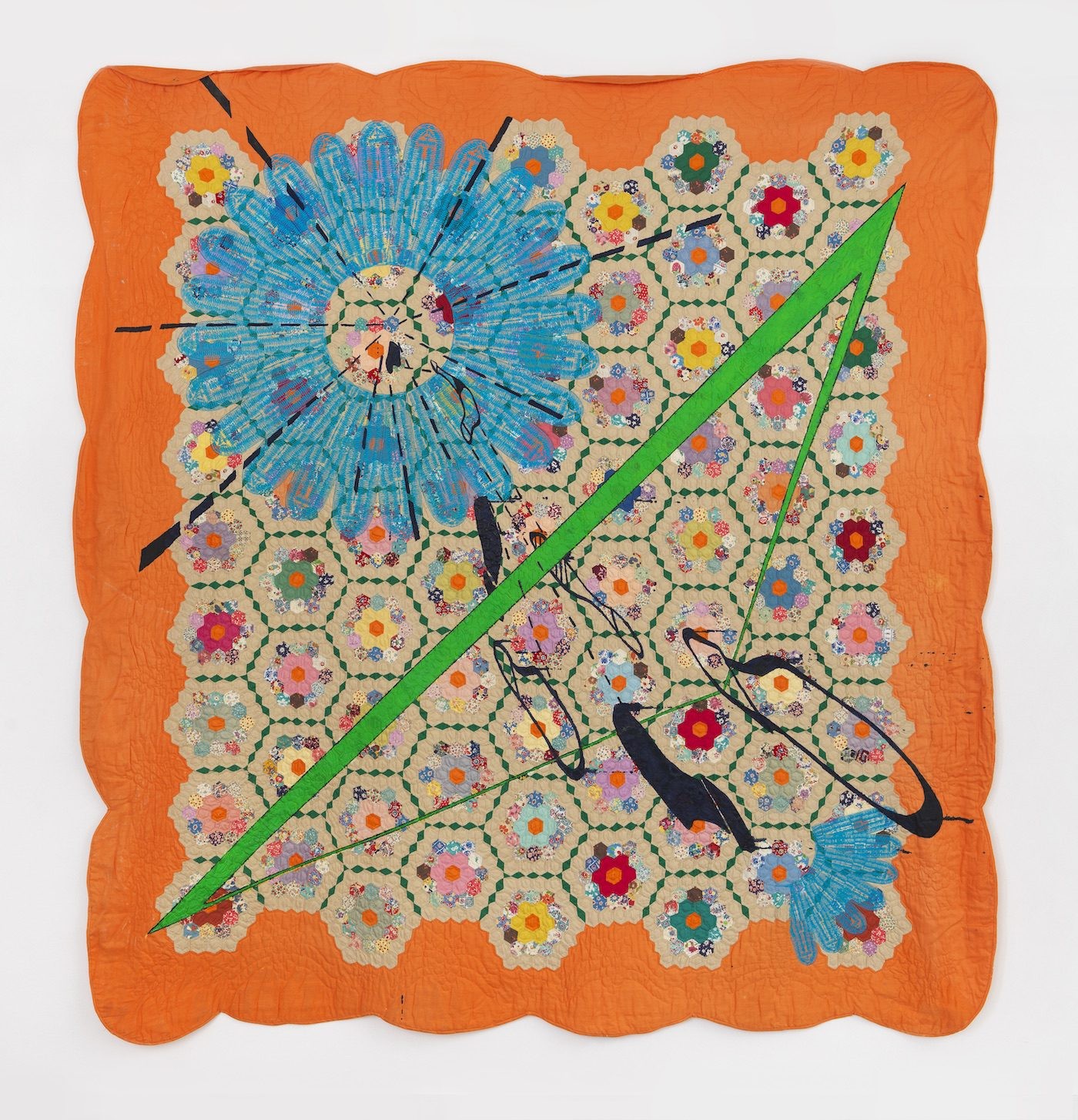
Sanford Biggers, Quilt 14 (Flying Lotus), 2012. Embroidery, fabric treated acrylic, spray paint, cotton. Courtesy of the artist and Marianne Boesky Gallery, New York and Aspen. © Sanford Biggers. Photo credit: Object Studies.
C&: There’s obviously a historical appreciation of the quilt, the ties to the Underground Railroad. What made you approach them with the idea of painting their surface?
SB: The quilts have several different points of interest for me. One of them is the formal aspect of it. I’ve always been into pattern, geometry based images, sacred geometry and textiles. For many years I created dance floors that were made of hand-cut linoleum rubber tiles that were based on mandalas that I fashioned in patterns I designed. I would take the floors to breakdance competitions and videotape the dancers and performers which was the genesis of using sacred geometry in my work. After working on the floors I wanted to move into something that had more of a historical and social dialogue. I was doing a project in Philadelphia where I was looking at stained glass windows and through that research, I ran into a bunch of quilts and learned about the history of quilts considered as signposts along the Underground Railroad. Allegedly, enslaved people escaping the south would come across a certain pattern or quilt folded a certain way and derived certain coded information from that quilt. This has been debated by historians over decades but I think as a piece of vernacular culture and history, it inspired me to think differently about quilts. Quilts already had the pattern content that I was interested in, but now they also had a bit more gravitas because of their supposed historical use. Additionally, there’s a sense of nostalgia: Antique quilts are seen as a piece of Americana and I like that there’s a bit of tension of whether I’m defacing or embellishing these pieces of US-history.
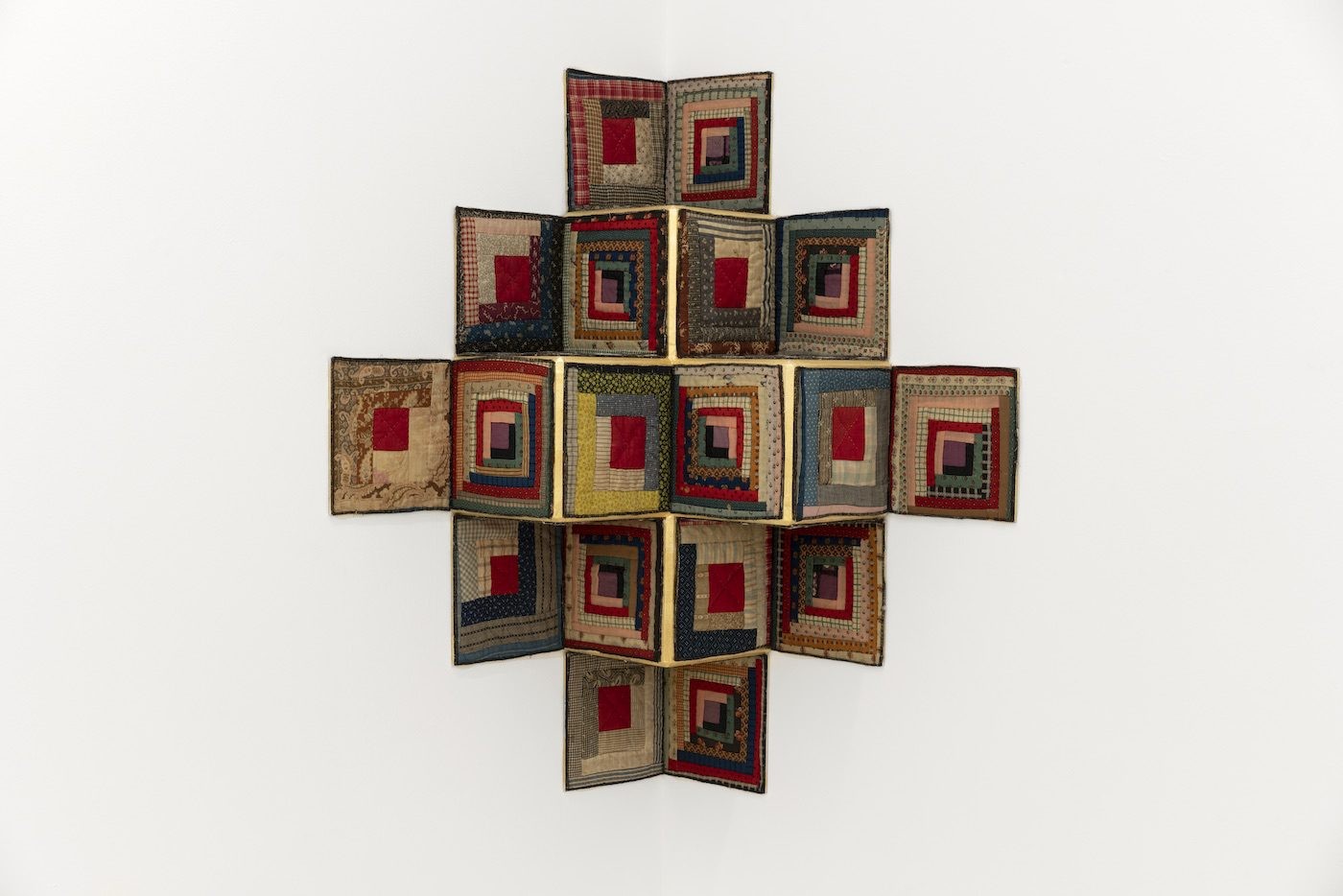
Sanford Biggers, Object Fool’s Gambit, 2019. Antique quilt, birch plywood, gold leaf. 39.75h x 35.75w. Courtesy David Castillo Gallery. Photographed by Zachary Balber.
C&: That makes me think about your video work BAM, and how defacing was a repeated marker in African history during colonialism.
SB: In the mid 90’s I lived in Japan, where I got really into Buddhism and Wabi Sabi, an aesthetic inspired by Zen Buddhism, that acknowledges the profundity and beauty within mundane or broken and disfigured objects. The idea is that everything in itself is already perfect, including asymmetry, dirt, rust or ruin. I use that approach in my found objects, quilts and African figures and suggest that their internal power or aura is probably stronger than the actions that I do onto them. So when I take the remnants of those figures and recast them into bronze, it’s a way of taking them from what was a vulnerable state to fortifying them and memorializing – in a material that is largely impregnable. There’s a transformation of these materials which is similar to the way I approach the Antique quilts. By sampling and taking a record that people have long forgotten, finding a breakbeat or something new that re-invigorates them. The quilts are patchworks, which are compromised of pieces of fabric from clothes and textiles that have been used and were going to be thrown away, but have now been re-purposed into artworks and/or utilitarian objects. I too take pieces and impose some type of action to them and then take the remnants to create more work from them. Nothing really gets wasted. It’s a patchwork logic.
C&: That makes me think about the Black Artist’s movement in LA in the 1960’s, artists like Noah Purifoy using assemblage.
SB: I spent a lot of time with Noah. After Japan I spent about three years in LA and I regularly took trips to Twentynine Palms, where he lived. I sat with him many times, interviewed him, and ultimately we became friends.

Sanford Biggers, Quilt, Moon Over Ninevah Bay, 2019. Antique quilt, acrylic, assorted textiles. cleat / dibond: 68 x 6 inches. Photo Credit: Serenade, © Sanford Biggers and Marianne Boesky Gallery, photograph by Object Studies
C&: It’s hard for you to be pinned down because you’re so multi-disciplinary.
SB: You could say the same for several artists, but for some reason if they’re white men using different materials and genres no one raises an eyebrow. But if it’s women or a person of color doing the same they’re asked: Why don’t you have one specific signature style?
C&: I was struck by your New Yorker interview where you mentioned that satire might be a difficult thing to achieve as a visual artist. And yet David Hammons’ recent show at Hauser & Wirth in LA made me laugh.
SB: Hammons knows how to create a power object, they code-switch on so many levels. With the most modest of means and materials he’s able to touch on so many expanded subjects and aesthetics, being one with them – conceptual art, formalism and so many other things. He’s sort of a magician in that way.
C&: I’m wondering about your choice of materials for the mandalas. Given their spiritual nature, it feels like you’re disrupting the traditional notion of them.
SB: When I did research on mandalas I read that sometimes they are not even depicted – not drawn, not painted, not made in sand. The monks remember the patterns and can represent them through movement and dancing and whirling through space. The mandala is not limited to one specific form, it’s more of a mindset and a transcendental state of sorts. That’s why I refer to breakdancing because it was very close to me when I grew up. A circular based modality. Eventually learning about modern dance and various forms of ritual lead me down that path. But I think that’s what artists do: we’re able to see and compile things and run them through our own personal filters and sensibilities to create something new. Sometimes that challenges perceptions, and sometimes it inspires. I think if there was just one reaction to a piece of art then that is probably a failure.
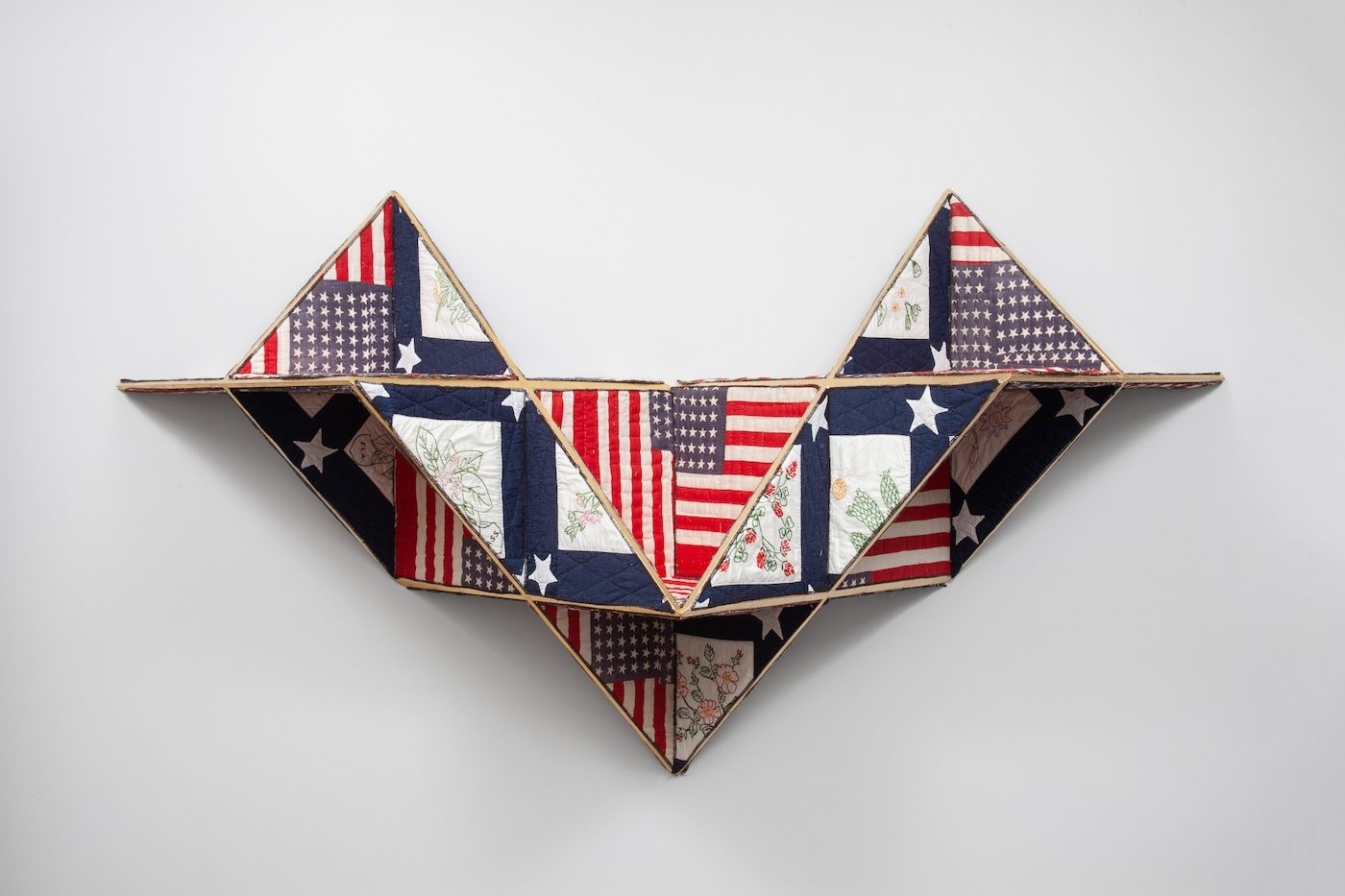
Sanford Biggers, Object Reconstruction, 2019. Antique quilt, birch plywood, gold leaf. 38 x 72 x 19 inches. Marty Nesbitt (Collector), Chicago, IL. Courtesy of the artist and Monique Meloche Gallery, Chicago. Photo: RCH Photography.
C&: What’s been the reaction to Cheshire, your Lewis Carroll inspired lip installation?
SB: Interestingly, I started doing the lips when I was in a residency in Germany. I started calling them Cheshire like the cat in Alice in Wonderland, so when I showed them in Europe, that’s usually how people relate to the piece. But when I showed the same work in the US, particularly in the south, people thought of Blackface minstrelsy. Every year there’s an entertainer who does something and offends a Black audience, who says that they are cooning and playing to a white audience making a buffoon of themselves. So minstrelsy has the ability to disappear and re-appear in its many forms. But it’s not just Black. I wanted that dichotomy to be read into a very simplistic pair of lips and teeth – as a funhouse gesture, as Lewis Carroll’s Cheshire cat or as Blackface minstrelsy. It code switches from a completely innocuous gesture to the sinister to the defamatory. It’s interesting to watch the context define the meaning as opposed to the piece defining any meaning.
Sanford Biggers has two New York exhibitions in the spring of 2020, a solo show featuring his new marble work atMarianne Boesky (April 30-June 13) andThe Bronx Museum of Art (April 8-September 6) survey of his “Codex” series, Codeswitch, a touring exhibition curated by Antonio Sergio Bessa and Andrea Andersson, atContemporary Arts Center New Orleans in fall 2020 and at the California African American Museum in 2021.
Sanford Biggers (b. 1970) was raised in Los Angeles and currently lives and works in New York City. He was awarded the 2017 Rome Prize in Visual Arts.
Nan Collymore writes, programs art events and makes brass ornaments in Berkeley California. Born in London, she lives in the United States since 2006.
Read more from
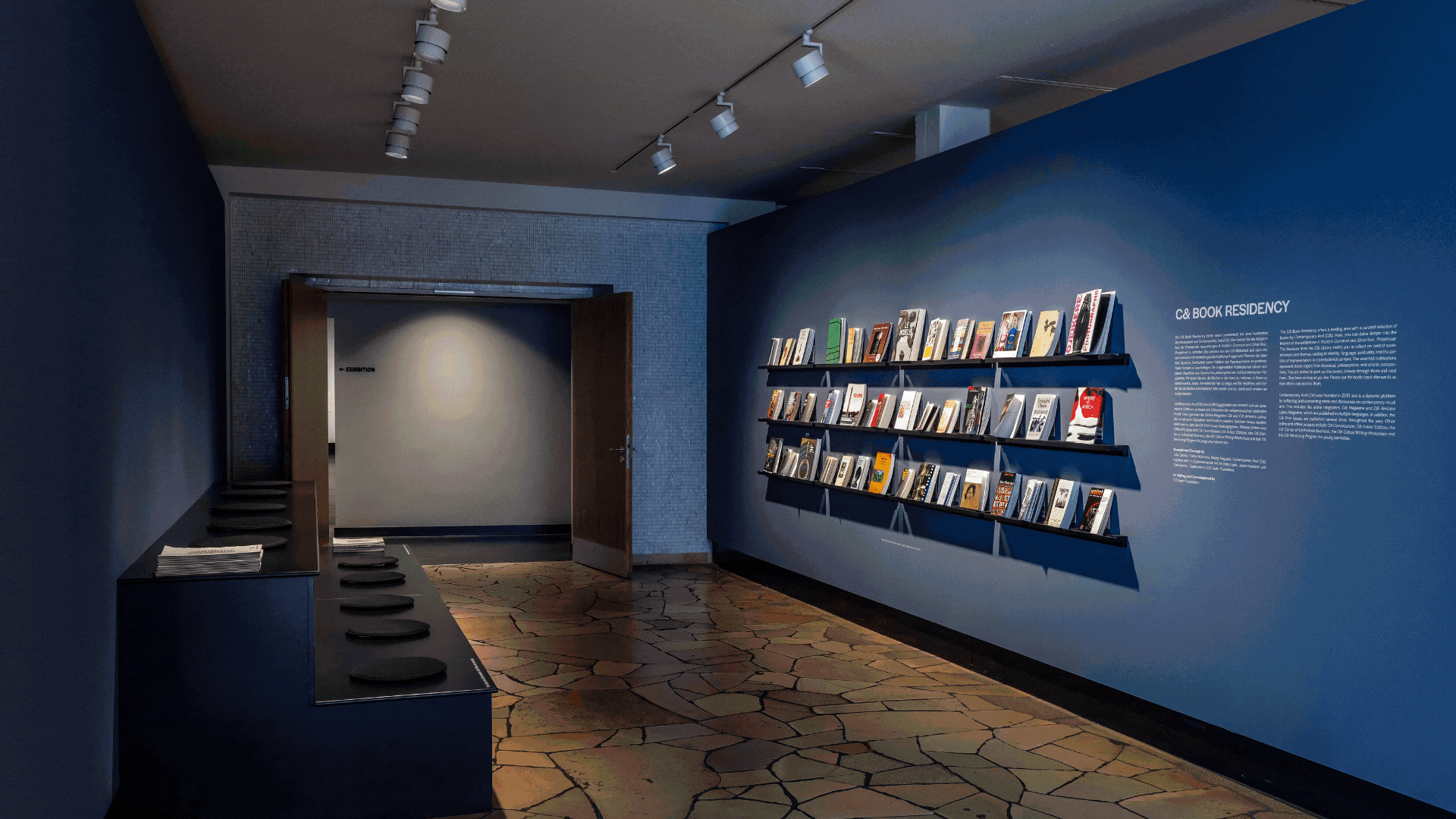
C& Highlights of 2025

Maktaba Room: Annotations on Art, Design, and Diasporic Knowledge

Irmandade Vilanismo: Bringing Poetry of the Periphery into the Bienal
Read more from
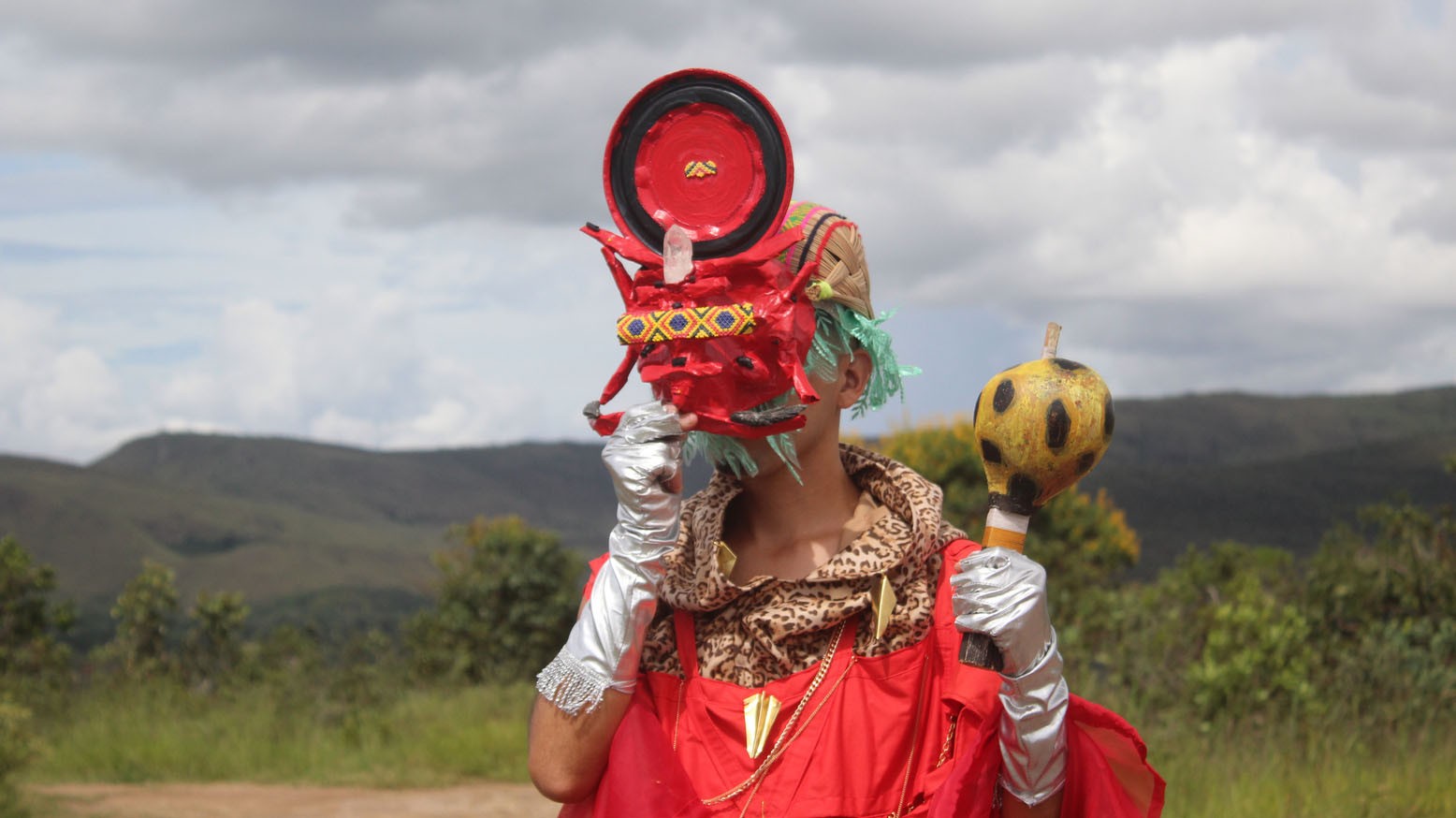
Biophillick: Connecting Ancestries Through Technology
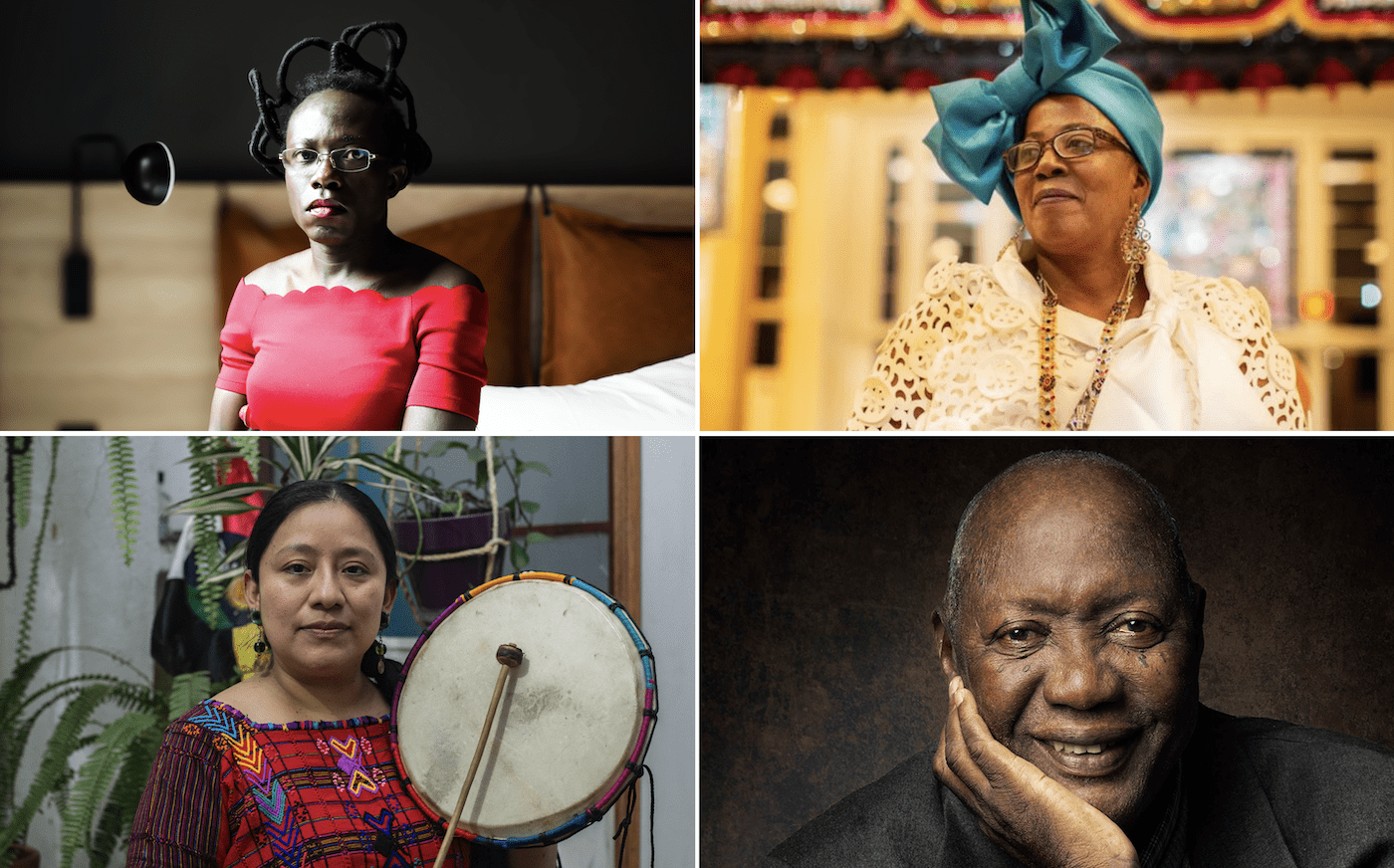
Prince Claus Impact Award Presented to Six Artists from Diverse Disciplines
